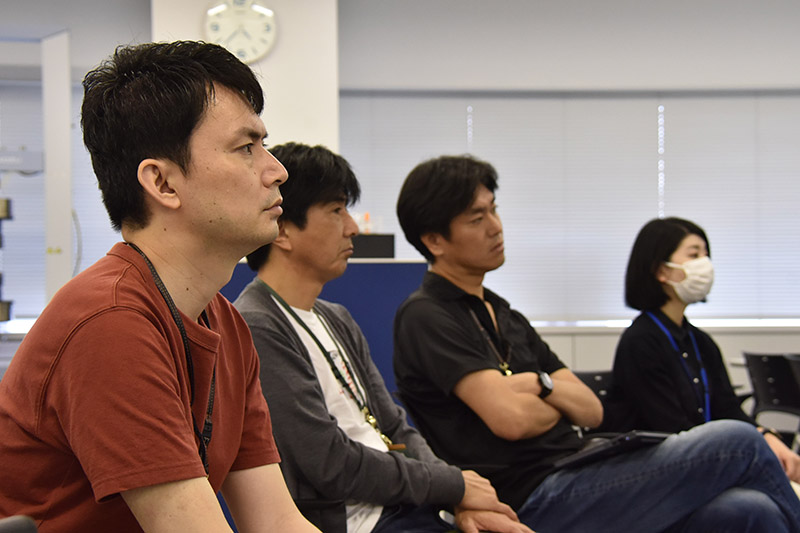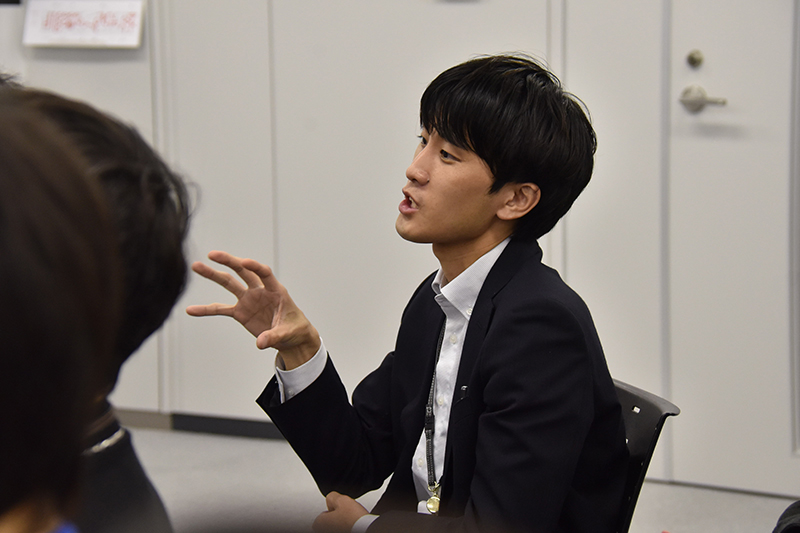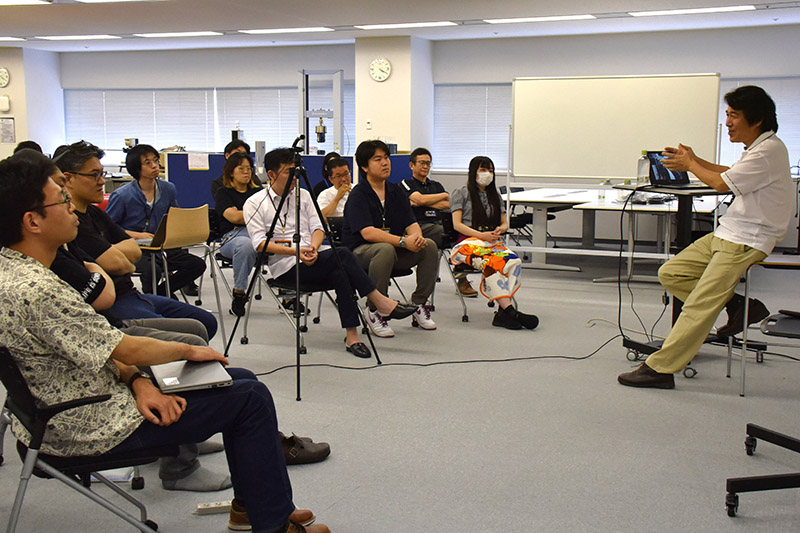Carbon nanotubes will bring usinto space!
CARBON FLY,
which promotes the use of carbon nanotubes as space materials,
is pleased to announce that Professor Masahiro Nohmi
has been joined us as an advisor of our aerospace business.
We have knowledge and experience with carbon nanotubes,
but we do not know much about space.
Therefore, we invited Prof. Nohmi, who is an expert on space,
to talk about our past efforts and the prospects of our space business.
(This is an edited article from our internal seminar.)

Masahiro Nohmi
-
Ph. D (Engineering, Mar, 1998, Tohoku University)
He is currently Professor, Faculty of Engineering - Department of Mechanical Engineering, Shizuoka University, after Associate Professor, Faculty of Engineering, Intelligent Mechanical Systems Design Engineering, Kagawa University. He is also CTO of STARS Space Service, Inc. and Advisor of our company from May 2023.
Prof. Nohmi’s Talk about
Steps to Space
 The Coming of the Nanosatellite Era
The Coming of the Nanosatellite Era
Q.
First of all, please tell us how you first encountered space research in earnest.
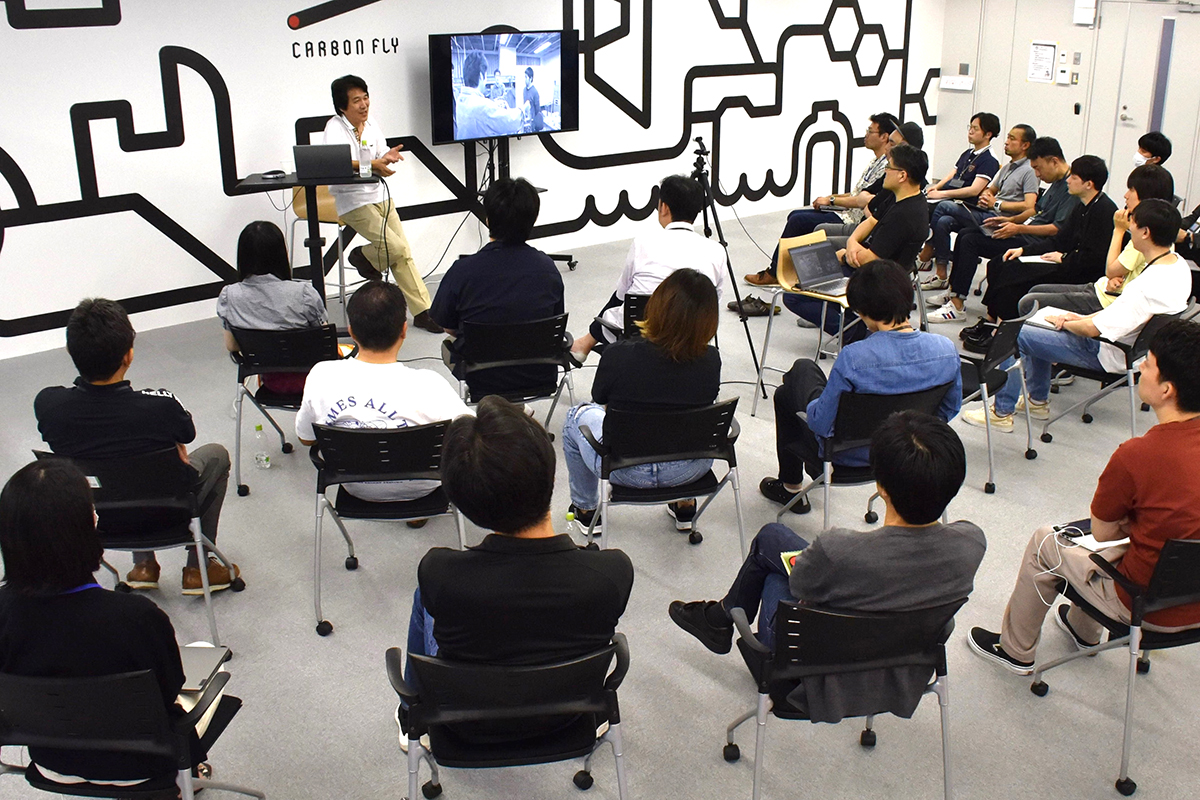
Prof. Nohmi
My first encounter was with JAXA's Engineering Test Satellite VII, launched in 1997. I was still half a student, and it was before the International Space Station was established. Japan was supposed to work independently on two major technologies for the ISS, and this satellite was to demonstrate them. Specifically, we experimented with rendezvous docking (two objects coming close together in space) and robot manipulation. Since I was from the Department of Mechanical Engineering, I was able to participate in this project because robots are in the category of machines. This was the first time I participated with an actual machine, although I have been doing this as a space research project for a while now. At that time, university laboratories were only conducting experiments in space on the ground, but in 2003, the University of Tokyo and Tokyo Institute of Technology launched their own nanosatellites. It was the turning point that academics became deeply involved in space research as a reality.
Q.
How big is a nanosatellite?
Prof. Nohmi
A nanosatellite is defined as weighing 100 kg or less. In the past, the development of satellites was a national project due to the enormous cost involved. However, nanosatellites can be developed and launched at much lower cost, making it possible for private companies and research institutes to develop and operate their own satellites. A popular satellite is called a CubeSat, which is about the size of one to three 10-cm cubes lined up on one side and weighs only 1 to 4 kg. The CubeSat standard was defined by a professor at Stanford University. In the beginning, Japanese academics developed satellites in the size they required, but in recent years, many organizations build satellites in the CubeSat size because it is easier to obtain parts as standardized products. In 2000, I became an associate professor at Kagawa University, where I was conducting space research, and in 2004 I participated in a symposium in Hawaii with my students. The purpose was to obtain the technology for a student competition called CanSat, in which students were to descend from the sky by paratroopers and use GPS to guide them to a target point. It was a space engineering symposium, and the University of Tokyo and Tokyo Institute of Technology were also participating. As I listened to their stories about nanosatellites they had launched the previous year, our students started talking about developing an actual nanosatellite instead of a CanSat, and I said, "Give it a try?” This was the beginning to develop our nanosatellite.
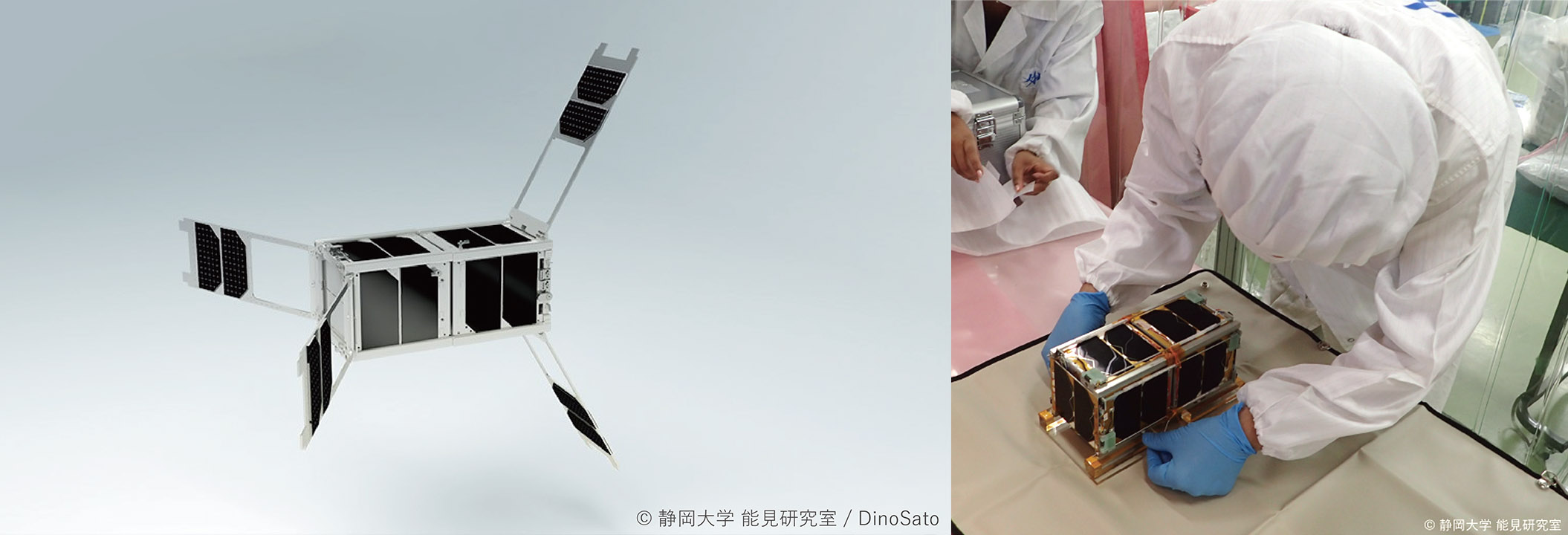
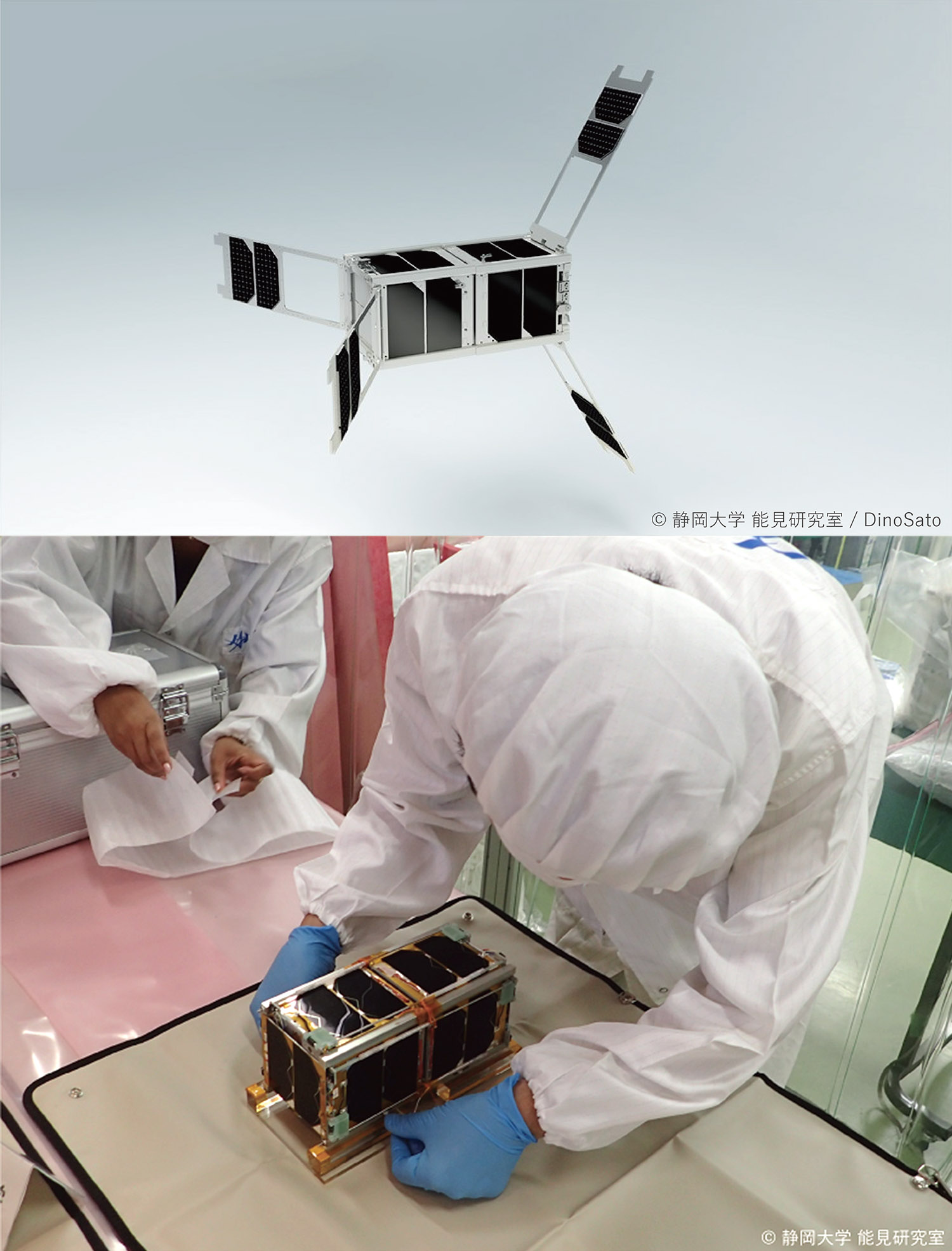
 CNT conductive tethers will bring innovation to
CNT conductive tethers will bring innovation to
satellites and space business
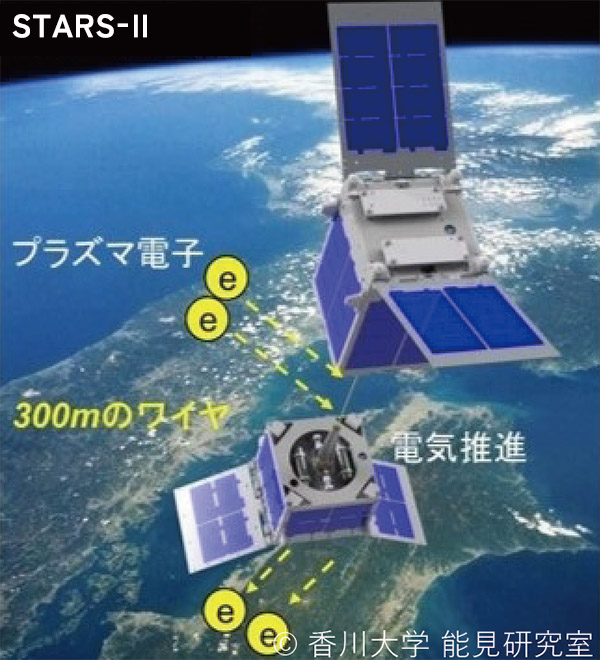
We named it the STARS project and started it in 2005. When we thought about what kind of satellite we wanted to develop, we decided that it would be one that used robots and tethers, which was the theme of our original research. In space, strings, ropes, and wires are all called tethers, and we decided to utilize them more and more.
Q.
Why do you research tethers?
Prof. Nohmi
First of all, I thought that tethers made of electrically conductive materials could be used to generate electricity. A rule was established to prevent satellites from floating in space after they have completed their mission, and to burn them on reentry into the atmosphere within 25 years of their launch. It is said that conductive tethers could be utilized to descend the satellite. Didn't you learn Fleming's left-hand rule in junior high school? It says that when an electric current flows in a magnetic field, it creates a motive force (Lorentz force). Since the Earth has a magnetic field, the satellite can be moved by stretching the tether vertically toward the Earth and passing an electric current through it.
Q.
How do satellites move?
Prof. Nohmi
To move a satellite, it needs to be loaded with fuel. This makes the satellite itself large and heavy and increases the cost, so nanosatellites were basically not equipped with an orbit control system. All we can do is pray not to collide with each other. Even though there is a lot of space debris, they actually come close to us only three or four times a year. Nevertheless, if we can control the orbit, we can avoid it. I think CNT is a valuable material as a conductive tether because satellites can be smaller or equipped with any other useful components instead of fuel.
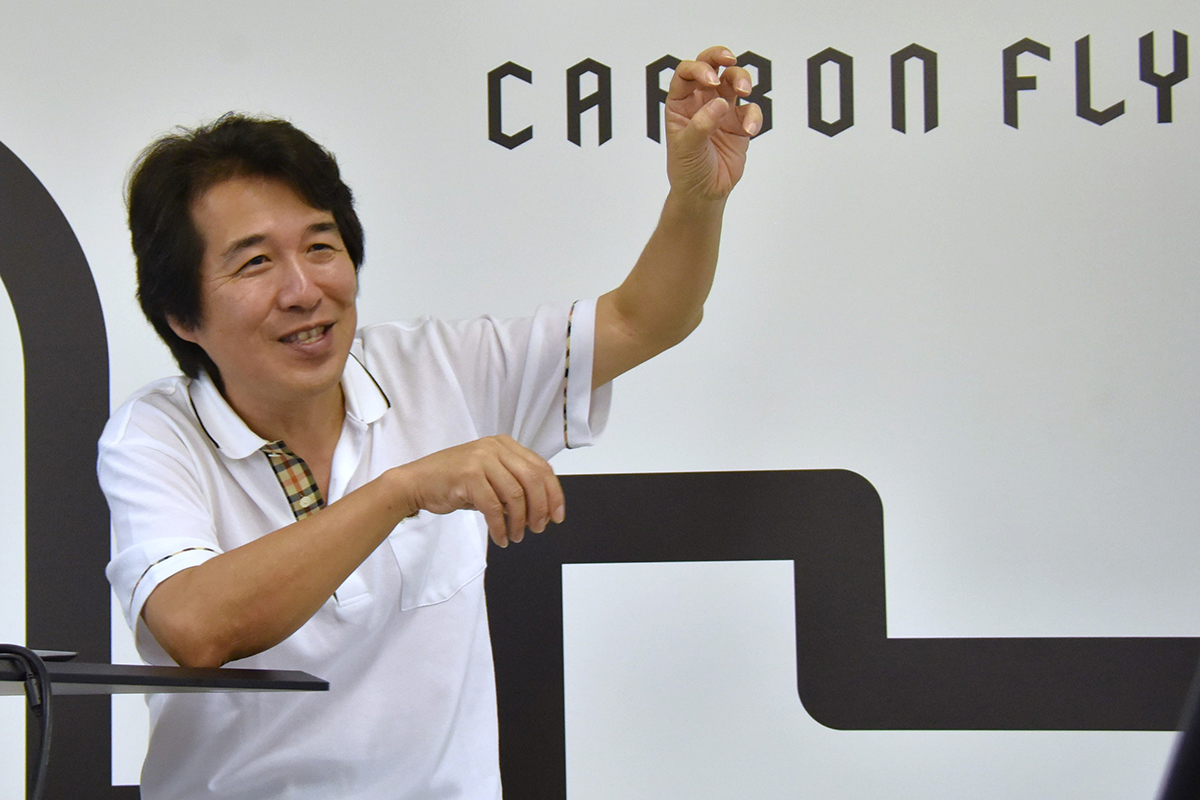
 Numerous hardships and failures lead to success
Numerous hardships and failures lead to success
Q.
What kind of demonstrations have you conducted with the satellites you have been involved in?
Prof. Nohmi
The first satellite, named STARS (nicknamed KUKAI), started in 2005 and was launched in 2009. The mission was to attach a robot to the end of a tether, control the attitude of the robot hanging from the tether, and take pictures of the satellite. The tether at that time managed to successfully extend. The second was STARS-II (nicknamed GENNAI), launched in 2014. At that time, we worked on conductive tethers. The tether was an unbound tether (mesh) that JAXA had made for testing on KOUNOTORI (an unmanned spacecraft used to transport supplies to the ISS), and we were trying to extend it 300 meters in space, The main microcontroller was not working... It is said that the solar activity became so intense about three days after launch that the radiation must have caused it to go haywire. But we still had another microcontroller installed at the tether extension point, and we used it to extend the tether. I had planned to use GPS data to measure how far the tether had extended, but since the main microcontroller was damaged, I could not obtain any data. However, based on a simulation of the time it took to re-enter the atmosphere, we know that it extended 300 meters. The first KUKAI was launched at an altitude of 560 km, so there was very little air resistance, but STARS-II was launched at an altitude of 400 km, so we knew from the beginning that it would re-enter the atmosphere earlier than that. We knew from the beginning that STARS-II would re-enter the atmosphere earlier than that. Even so, the re-entry was considerably earlier than satellites of other universities launched at the same time, and we have come to the conclusion that this was because the tether was extended and aerodynamic drag was strengthened. This was the end of the project at Kagawa University, which moved to Shizuoka University in April 2014. The third STARS-C (nicknamed HAGOROMO) was the first one we built at Shizuoka University. From this satellite, we adopted the size of CubeSat.
The fourth unit was an attempt to extend the tether 100 m in 2016, and based on the reflection of STARS-II, a strong independent microcontroller was attached for tether extension, extending it 70-80 m. This was a spool type, and the tether was not extended to 100 m. This was a spool type tether, which used spring force to extend the tether, but it was not strong enough and did not reach 100m. If the spring is too strong, it will come back the other way, so it is not a matter of just being strong enough. This re-entered the atmosphere in 2018. The fifth satellite is called STARS-Me (nicknamed TENRYU). This was released from the International Space Station in 2018. At that time, space debris was becoming quite an issue, and while the use of conductive tethers to drop satellites into the atmosphere was attracting more and more attention, there were cries that the extended tethers would hit other objects, and since 2010, space experiments had been difficult to conduct. The satellites we had been working on had naturally extended tethers, but the rule was to not only extend the tether, but to reel it in. We decided to conduct a space elevator experiment, so we attached a small box called a climber between the parent and child satellites and extended the tether about 15 meters. However, the antenna did not extend well, so we could not conduct the mission by receiving radio waves from the ground. We re-entered the atmosphere in 2021. The sixth one we were working on at the same time was Stars-AO (nicknamed AOI), which was launched in 2018. The idea was to take pictures with an ultra-sensitive camera and send them to the ground. This one is not utilizing a tether, but it has not yet entered the atmosphere and is still in orbit. The seventh is STARS-EC (nicknamed SANKO), a 3U (unit) satellite, which was released from the International Space Station in 2021 and re-entered later that year. The previous STARS-Me elevator was a small climber, but this time we have a 1U climber. The tether was successfully extended and retracted 11 m using a measuring tape. In terms of operation as an elevator, there were some issues, but at this time, we invited an amateur radio operator from Kagawa to Shizuoka for final adjustments, and communication was successful. As expected, the antenna was difficult. It is said that university satellites have weak communications, so this is a major challenge. The eighth satellite is Stars-Me2 (nicknamed HORAI). It has already been completed and is waiting to be loaded onto a rocket for launch from the ISS.

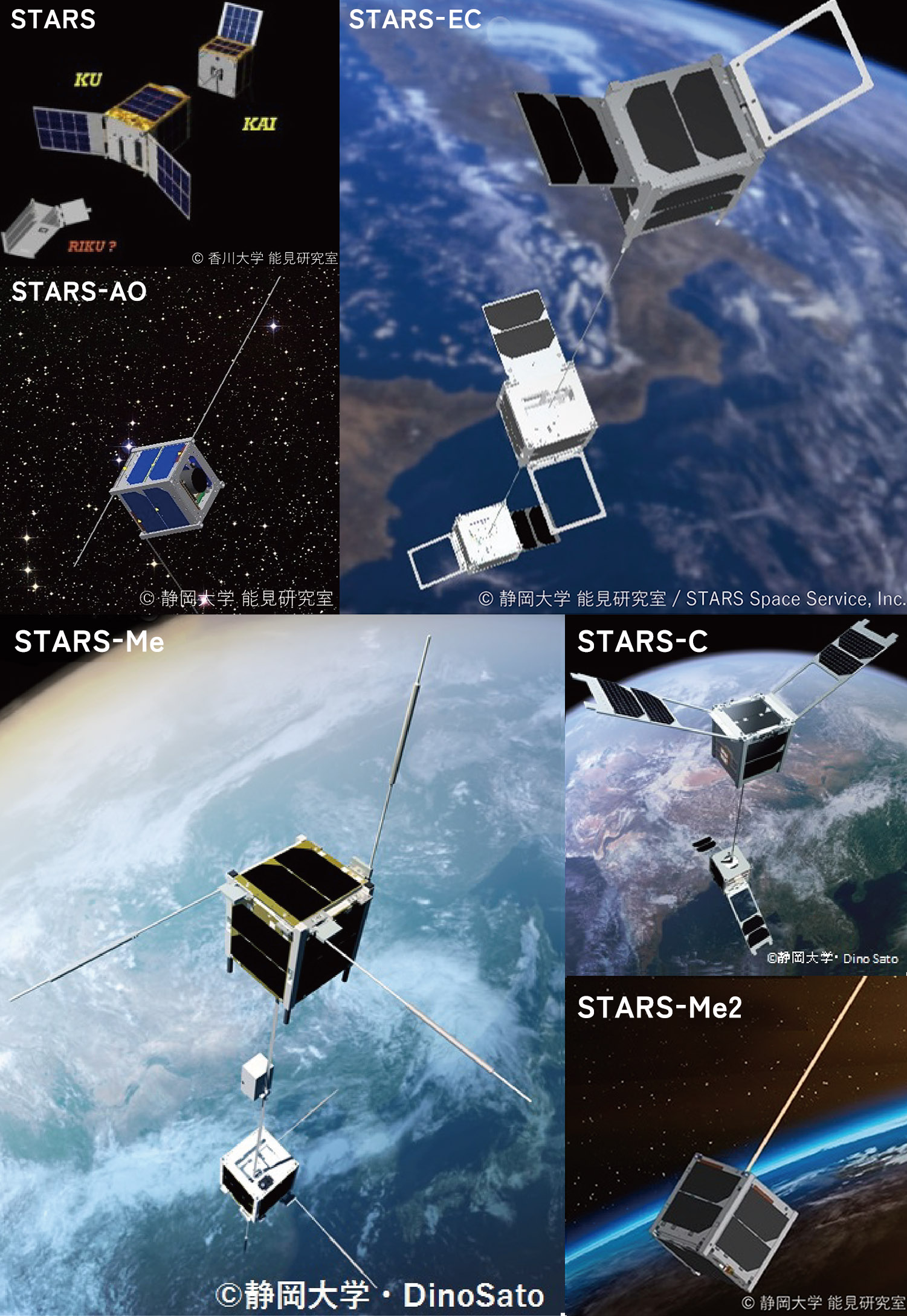
 Taking Carbon Nanotubes into Space
Taking Carbon Nanotubes into Space
The STARS-X is currently being worked on.
This is scheduled to be released to an altitude of around 550 meters.
This time, we will first extend the tether and expand
the net to catch space debris. Again,
since we actually encounter debris only a few times a year,
this time we will release a substitute for debris from
the satellite and conduct an experiment to catch it.
Q.
We are participating in this STARS-X project by providing CNT materials.
Prof. Nohmi
I have been working on nanosatellites since I was a member of Kagawa University, and Shizuoka University decided that we should make a business out of it, so we launched a venture company. That is STARS Space Service Co. The president of STARS Space Service told me that she was going to meet with someone who was running a carbon nanotube manufacturing venture, so I accompanied her. “Someone” was your president.
Q.
We heard that our president made an impassioned speech on the spot, saying that existing components could be made lighter by manufacturing them with carbon nanotubes (laughs).
Prof. Nohmi
Yes. Then, I said “Give it to try?”. We decided to make a panel for the satellite body, a net to catch debris, and a tether to connect the parent and child units, all made of CNT. Especially about the panel, I wondered if it was really safe, but I was surprised when it passed all the vibration and shock tests. As for the tethers that connect the parent and child units, we decided to use Vectran, but I would like to try some preliminary experiments. We are now considering the possibility of loading a CubeSat and extending the CNT tether from it. If we can wind up the tether after stretching, it will be a world first.

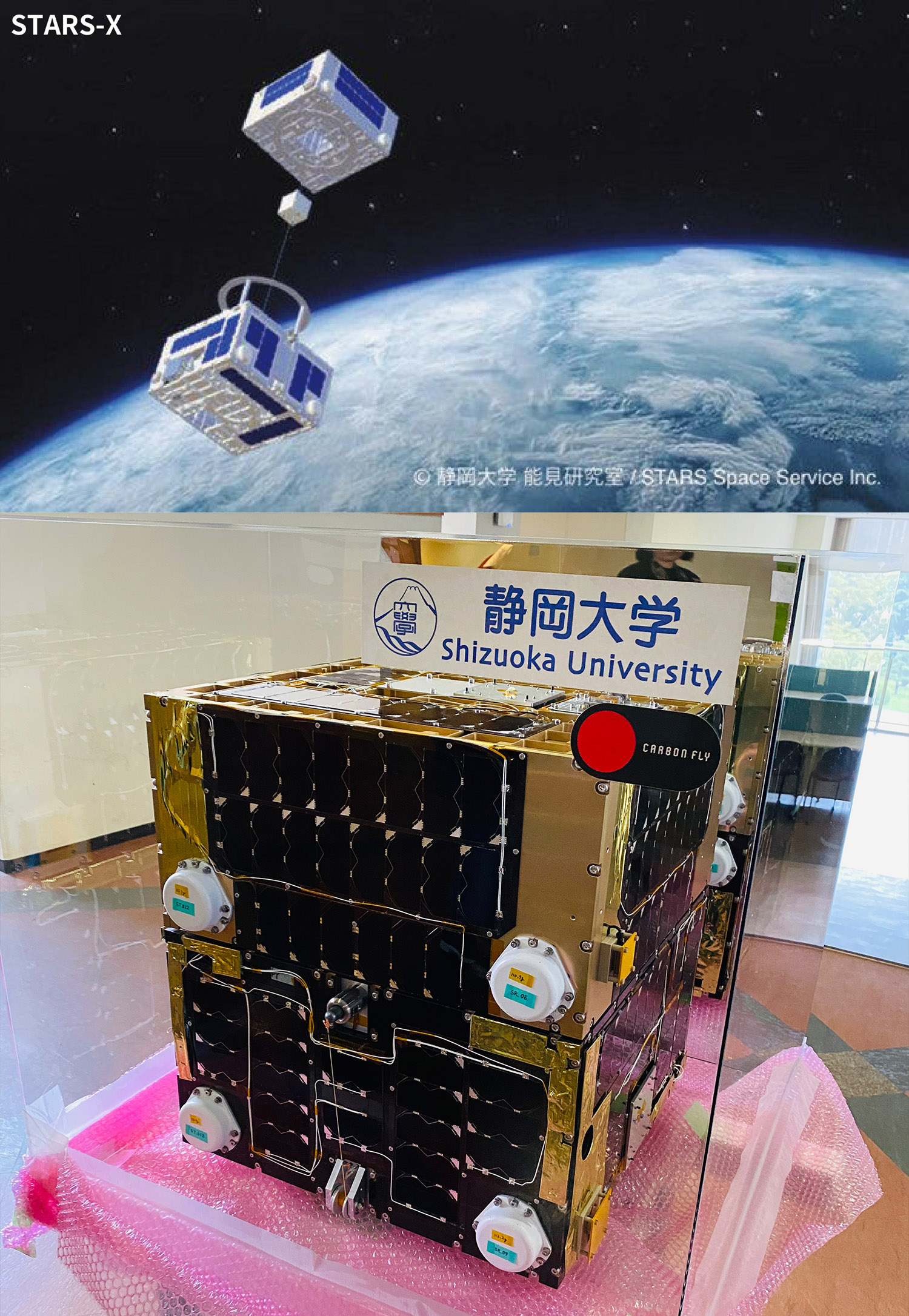
 Expectations for Carbon Nanotubes
Expectations for Carbon Nanotubes
Q.
What are your expectations for carbon nanotubes?
Prof. Nohmi
First of all, it is very important that they are light. When they are used in rockets, there is a weight limit, so if they are light, it will be possible to add other functions to them. If the whole system is lighter, the cost of launching it will also be reduced.
Q.
What do you think about the feasibility of a space (orbital) elevator, which is our dream?
Prof. Nohmi
I thought a space elevator was impossible. I thought so. As is often said, there is a lot of garbage in space. The world is concerned about collisions, and if you build a space elevator in such a place, it would collide with a lot of things. I thought so, but I have changed my mind a little bit. It is said that there are roughly 20,000 to 25,000 pieces of space debris right now. SpaceX says they are going to launch 20,000 Starlink spacecraft there. I began to think that we would have to organize traffic like airplanes flying. If it becomes possible to organize the traffic so that it doesn't hit the ground, a space elevator will become a reality. I hope we can make such an era a reality.
Editorial Postscript
Our space business has been materialized through our relationship with Prof. Nohmi. We were struggling to make panels, tethers, and peripheral mechanisms, and to produce CNT as their materials, though most of us did not know much about the mission of STARS-X or what a nanosatellite is. That’s why we decided to hold an in-house seminar. This was our first attempt, and we were honestly worried that the content would be too difficult especially for administrative staffs who don’t work for the nanosatellite directly. However, he spoke in an easy-to-understand manner, and there were times when the audience laughed, making the seminar more like a dialogue between him and us rather than a lecture. We were also able to hear some behind-the-scenes stories, and a back-office staff said, "I wonder if I'm allowed to hear such stories...? It was too valuable for me!” Prof. Nohmi explained not only his own activities but also the circumstances that led to the transition of the space business. We are glad that we could share it with people outside the company. We hope it will help those who are somewhat interested in space to have a more realistic image of it. We’d like to continue to provide easy-to-understand information about the near future of carbon nanotubes, the appearance is just a black object.


